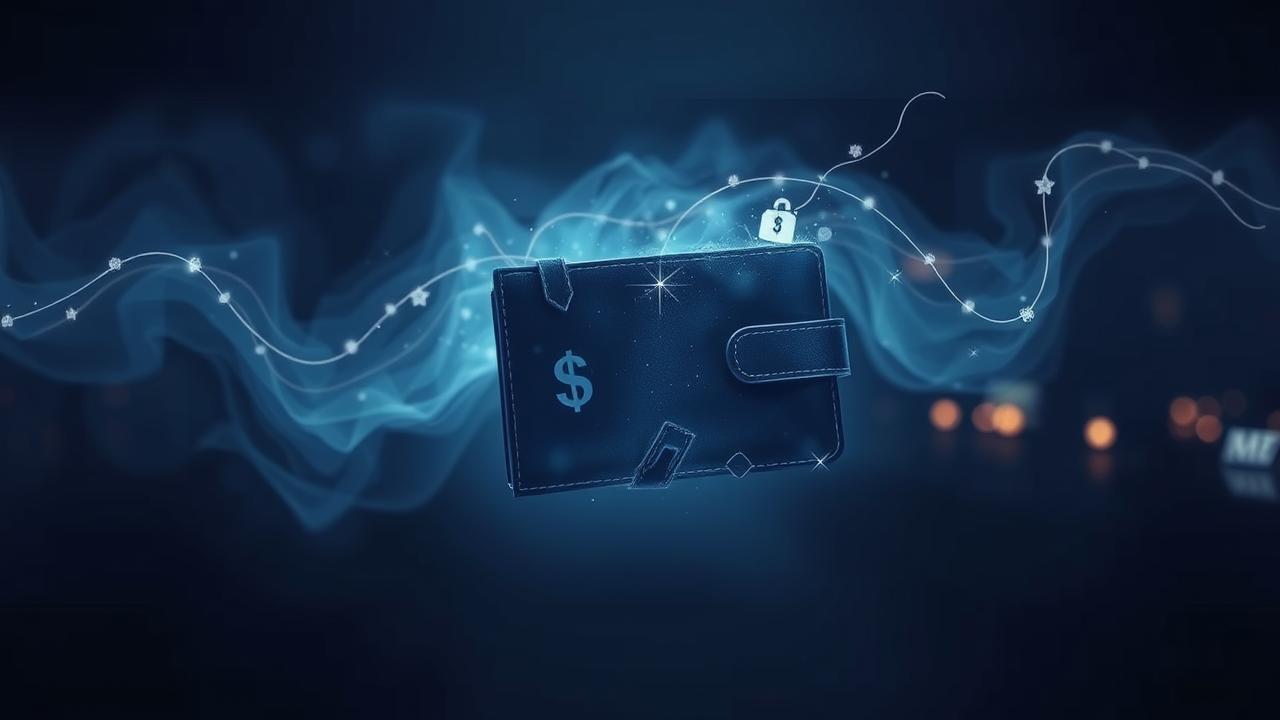The silence in the house is a liar. It says everything is fine, but the stack of envelopes on the kitchen counter has its own gravitational pull, a low thrum of dread that follows you from room to room. It’s a weight that has nothing to do with paper and everything to do with the numbers printed inside—numbers that climb higher in the dark while you sleep, feeding on interest. This isn’t just about money. This is about the life force they are quietly siphoning away, one minimum payment at a time. The first step to truly get out of debt is to stop pretending you can’t hear the noise. The most powerful thing you can do is decide, right now, that you will be the one to silence it for good. Learning how to pay off credit card debt isn’t a chore; it’s an act of rebellion.
Your Battle Plan Unleashed
There is no magic wand. There is only a plan, forged in clarity and executed with relentless commitment. Here is the framework:
- Face the monster. You will conduct a brutal, honest audit of every dollar you owe and every dollar you spend. No more hiding.
- Choose your weapon. You will select a targeted debt elimination strategy—Avalanche or Snowball—and commit to it without deviation.
- Maneuver and attack. You will explore restructuring your debt through consolidation or balance transfers to starve the beast of its high-interest fuel.
- Win the war in your mind. You will confront the emotional triggers behind the debt and build the psychological armor to prevent it from ever returning.
- Call for backup when needed. You will recognize when the fight is too big to handle alone and seek out trusted professional allies.
Step One: The Unflinching Autopsy
The low fluorescence of the kitchen light hummed, casting long shadows from the towers of unopened mail on the table. For weeks, Kyla, a paramedic accustomed to the controlled chaos of life-or-death emergencies, had practiced a quiet avoidance of these letters. The sight of them sent a cold spike of anxiety through her that no trauma scene ever could. Tonight was different. A deep, bone-weary exhaustion with the fear itself finally broke through the paralysis. She took a breath, the kind she’d tell a panicked patient to take, and ripped one open. Then another. And another.
This is your starting line. Stop guessing and start quantifying. Treat this like an emergency audit because it is one. You need a rigorous inventory of every single balance, every soul-crushing interest rate (APR), and every minimum payment. This is not about shame; it is about gathering intelligence on the enemy. Understanding the total scope is critical before you can deploy effective debt elimination strategies.
At the same time, you dissect your spending. Credit card debt is rarely a math problem at its core; it’s a symptom of an emotional disconnect from money. Create a budget that reflects your actual life, not a fantasy of monastic denial. Identify every subscription, every casual lunch, every “just this once” purchase that can be cut. This isn’t about punishment. It’s about liberating cash to fuel your assault.
Finally, calculate your Debt Freedom Day. Use a spreadsheet or an online calculator to see the date your final balance will hit zero. Stare at it. Let that tangible reality burn into your mind. It’s no longer a vague wish; it’s a destination on a map you now hold.
Choosing Your Weapon: Avalanche vs. Snowball
In the cramped, steamy heat of the restaurant kitchen, Bruno felt the relentless grind in his bones. He worked doubles, his hands raw, his mind a blur of orders and inventory. His credit card debt felt just like his job: a frantic, unending cycle he couldn’t get ahead of. The idea of a complex financial strategy felt like another weight he couldn’t carry. He needed a win. Something real he could hold onto.
Once you know your numbers, you need a strategy. The two dominant structured repayment plans are the Avalanche and Snowball methods. Both demand you pay the absolute minimum on all accounts while you unleash every spare dollar onto a single target.
The debt avalanche method is the cold, hard mathematician’s choice. You hammer away at the debt with the highest APR, regardless of the balance. Once it’s gone, you roll that entire payment (the old minimum plus all the extra cash) onto the card with the next-highest APR. It’s the most efficient route, saving you the most money in interest over time. It’s a war of attrition.
But then there’s the debt snowball method. This strategy targets the smallest debt balance first, ignoring interest rates. For Bruno, this was the answer. Destroying his smallest card—a nagging $500 balance from a forgotten emergency—wasn’t just a financial transaction. It was a surge of pure, unadulterated victory. Holding the shredded plastic in his hand, he felt a power he hadn’t felt in years. That psychological win is the fuel that can power you through the long slog. Choose the method that feeds your spirit: the mathematical purity of Avalanche or the emotional momentum of Snowball.
Tactical Maneuvers: Consolidate, Transfer, or Negotiate
You don’t have to fight this war on the enemy’s terms. High-interest debt is a raging fire, and your job is to starve it of oxygen. It’s time to move beyond brute force and start using tactical leverage.
A debt consolidation loan offers a way to bundle multiple high-interest brushfires into a single, more manageable blaze with a lower, fixed interest rate. When you consolidate credit card debt with a personal loan, you simplify your life to one payment and, more importantly, you halt the terrifying math of compounding credit card interest. It’s a strategic retreat to a more defensible position.
Even more powerful is the balance transfer. If your credit is still reasonably healthy, you might qualify for a card offering a 0% introductory APR. This is your siege weapon. You can move high-cost debt onto this card and spend the next 12, 18, even 21 months attacking the principal without a single cent of interest accruing. A word of warning from the trenches: these offers are not gifts. They are time bombs. Note the one-time transfer fee (typically 3-5%) and the hard deadline. If you haven’t paid it off by the time the intro period ends, the rate can skyrocket, and you’ll be right back where you started.
If you’re already behind, don’t retreat into silence. Go on the offensive. Direct negotiation through debt settlement can be a path forward. Call your creditors. Explain your hardship, clearly and without apology. Ask for a temporary rate reduction or a formal payment plan. They might say no. But they might say yes. You lose nothing by asking.
Witnessing the Math of Freedom
Sometimes, seeing is believing. The numbers on a spreadsheet can feel abstract, but visualizing the direct impact of your choices can be the spark that ignites a bonfire of motivation. This video breaks down the mechanics, showing you just how fast the right strategy can incinerate your debt.
Source: ACCOUNTANT EXPLAINS The FASTEST Way To Pay Off Credit Card Debt via YouTube
Conquering the Ghost in the Machine
Debt is rarely just about math. It’s the ghost in the machine. It’s the echo of self-doubt, the clawing shame, the deep exhaustion that leads to the keyboard for a little retail therapy—a fleeting hit of dopamine financed at 24.99%. To truly get out of debt and seal the door behind you, you have to face the emotional phantoms that got you here.
You must reframe your relationship with the entire system. Understand that the credit industry doesn’t want you to be free. It profits from the illusion of “rewards” and the gentle slavery of the minimum payment. The anemic satisfaction of cash back is nothing compared to the profound power of owning your own life. Your goal is not self-flagellation; it’s self-liberation.
As you pay down your debt, you must also build your fortress. Understand the crucial difference between bad debt vs good debt and internalize vital tips to avoid debt in the future. Simultaneously build an emergency fund. Start with $1,000. That small cushion is the barrier that stands between an unexpected car repair and a slide back into high-interest hell. This dual-front war—attacking old debt while building new defenses—is the cornerstone of your financial independence roadmap.
When to Call in the Cavalry
Nolan stood in the framing of a luxury home he was managing, the scent of sawdust and fresh paint in the air. He could coordinate a dozen subcontractors and manage a multi-million dollar budget to the penny, a master of complex systems. But at home, his own finances were a chaotic, burning wreck. At over $60,000 in credit card debt, he felt like a fraud. He’d tried the Avalanche method, but the sheer size of the highest-interest card felt insurmountable. After three months of furious payments, the principal had barely budged. A missed payment due to a work trip sent him spiraling into a shame so profound he simply stopped trying.
There is no shame in being outgunned. For overwhelming debt, professional support isn’t a sign of failure; it’s a strategic escalation.
Reputable, non-profit credit counseling is your intelligence officer. An expert will review your entire financial picture, help you forge a sustainable budget, and educate you on the path forward. They provide the map and the compass.
A debt management plan (DMP) is the cavalry charge. Facilitated by that same agency, a DMP is a formal agreement where they negotiate lower rates with your creditors. You make one consolidated monthly payment to the agency, and they handle the distribution. It’s a structured, disciplined siege that can take 3 to 5 years, but it provides a definitive end to the war.
A word of extreme caution: the landscape is littered with for-profit debt relief programs and settlement companies that are often just wolves in sheep’s clothing. They promise the moon, charge outrageous fees, and can leave your credit in smoldering ruins. If you need help, start with a vetted non-profit agency, like those approved by the National Foundation for Credit Counseling (NFCC).
Your Digital Arsenal
Don’t you dare try to manage this war in your head. That’s a battle you’ll lose every time. Your mind will play tricks on you, rounding down the bad and rounding up the good. You need cold, impartial tools of war.
Arm yourself with a reliable debt payoff calculator. These instruments of truth, available from countless financial institutions, will model your fight. They show you in stark, undeniable terms the difference between your current path and a strategic assault using Snowball or Avalanche. It transforms your “Debt Freedom Day” from a hopeful fantasy into a hard data point.
Deploy a robust budgeting app like You Need A Budget (YNAB) or a similar zero-based system. These aren’t just trackers; they are command-and-control centers for your cash flow. They force you to give every single dollar a job, ensuring that any money you liberate from your budget is immediately assigned to the front lines of your debt war, not lost to the fog of “discretionary spending.”
Intelligence from the Front Lines
Others have walked this path through the fire. Their wisdom can be your guide, their strategies your own. These texts offer more than advice; they offer a fundamental rewiring of the machinery of your financial mind.
The Debt Escape Plan by Beverly Harzog: A tactical field manual for breaking free from balances and turning your credit score into a weapon.
Debt Free For Life by David Bach: This isn’t just about escaping debt; it’s a complete architectural blueprint for a financial life where debt can never again take root.
Financial Feminist by Tori Dunlap: A raw, defiant look at the emotional and societal architecture that funnels so many into debt, and the powerful mindset shifts required to tear it all down.
Dispatches from the Field: Your Questions Answered
What is absolutely the fastest way to pay off credit card debt?
The fastest way is a brutal two-pronged assault: deploy the mathematically superior Debt Avalanche method (unleashing all extra funds at the highest-interest card) while simultaneously engaging in a scorched-earth campaign on your budget. Cut every non-essential expense, sell what you don’t need, and consider a second job or side hustle to generate more ammo. Speed is a function of firepower.
Is $20,000 in credit card debt really that bad?
Yes. Don’t let anyone tell you otherwise. Any amount of debt compounding at 20% or more is a financial emergency. A $20,000 balance isn’t just a number; it is a predator that, left unchecked, will grow exponentially through interest alone. It requires immediate, structured intervention before it consumes your financial future.
Should I drain my savings to wipe out my credit card debt?
For most, the answer is a resounding yes. The guaranteed, tax-free “return” you get by paying off a 22% APR card dwarfs the paltry 4% you might earn in a high-yield savings account. However, do not leave yourself defenseless. Keep a small emergency fund—$1,000 or one month of essential expenses—as a firewall. Wiping out high-interest debt with savings isn’t spending money; it’s one of the highest-yield investments you can possibly make.
Allies and Intelligence Caches
- Military OneSource: Dedicated financial counseling and debt management resources for service members and their families.
- MyCreditUnion.gov: Unbiased government intelligence on managing credit and consumer loans effectively.
- NCOA Guide for Older Adults: Specific strategies for seniors navigating credit card debt challenges.
- Experian Debt Strategies: Insights from a credit bureau on how different payoff methods impact your financial profile.
- National Foundation for Credit Counseling (NFCC): Your most trusted resource for finding vetted, non-profit credit counseling agencies to help you forge a personalized battle plan.
- r/personalfinance: A massive community sharing frontline stories, strategies, and support.
Your First Step. Right Now.
The journey of a thousand miles begins with a single, defiant act. The future you dream of—one free from the gnawing anxiety of debt—is not built tomorrow. It is built now. Stop reading. Stop planning. Do. Go grab one of those credit card bills. Log into the account. Look at the minimum payment, then look at the balance. Now, make an extra payment. Not next Friday. Right now. Whether it’s $50 or $5, that small, decisive action is the first shot fired in the war to pay off credit card debt. It’s the moment the hunted becomes the hunter. Go.







